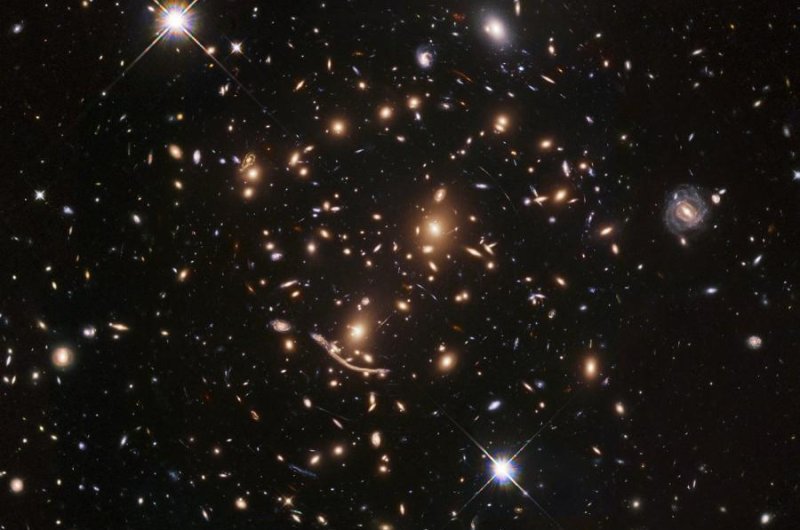Abell 370 is a large galaxy cluster located 4 billion light-years away. Photo by NASA/ESA/Hubble
Sept. 14 (UPI) -- Hubble's BUFFALO survey, a mission to image six of the universe's earliest galaxies, has officially begun. The space telescope recently photographed the first of the survey's six targets, the galaxy cluster Abell 370.
Abell 370 is located 4 billion light-years from Earth. It is situated in the constellation Cetus. The core of the galaxy cluster is made up of several hundred galaxies.
In the new image of Abell 370, the cluster is surrounded by several small, distant galaxies. The galaxy appears thanks to the gravitational lens surrounding Abell 370.
A gravitational lens, or gravitational lensing, is a phenomenon whereby the gravity of a galaxy in the foreground bends the light of a more distant galaxy, creating a magnifying lens-like effect. The phenomenon is often used to study galaxies that would otherwise be too far away to see.
In this case, scientists aren't interested in the magnified galaxies. They're using Hubble to study Abell 370 and other early galaxy clusters in an effort to better understand the evolution of the universe.
Characterizing the growth and evolution of the earliest galaxy clusters can help cosmologists better understand how the universe came to look as it does today. For the BUFFALO mission, scientists are particularly interested in modeling the accumulation and organization of dark matter in the early universe.
Data collected during the BUFFALO survey will be contrasted with observations of the same galaxy targets by different satellites. By combining datasets, scientists will be able model each cluster's distribution of ordinary and dark matter in 3D.
"These maps help astronomers learn more about the evolution of the lensing galaxy clusters and about the nature of dark matter," according to Hubble researchers.















